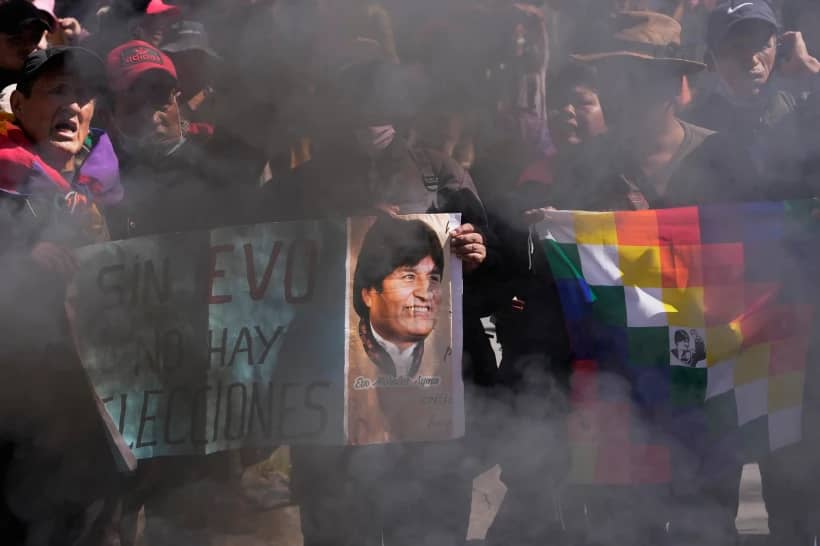SÃO PAULO, Brazil – A declining proportion of Catholics and accelerated growth of Evangelical denominations in Brazil since the 1970s have frequently caused anxiety for the Catholic Church, which fears a vocations crisis from which it might not easily recover.
Although the country continues to have the biggest Catholic population in the world with 123 million adherents, a supposed lack of priests could speed up a downfall. But the insufficiency of the clergy in Brazil may not be so obvious.
The emphasis Pope Francis has been giving to the pastoral work in the Amazon in the past few years has made discussion about the number of priests in Brazil rather urgent.
The huge challenges involving the Church’s efforts in the Amazonian region, which spreads over 2.7 million square miles and 9 countries in South America, has led a part of the episcopate to consider the ordination of married men, something that will be discussed during the Synod of Bishops for the Pan-Amazon region scheduled to happen in Rome in October.
“It’s common to talk about income inequality in Brazil, but we also have a bad distribution of the clergy. There is a clear concentration of priests in the south and southeast of the country. Part of them could be successfully sent to the Amazon,” said Father José Carlos Pereira, who holds a doctorate in sociology and is the author of several quantitative studies on the Brazilian clergy.
According to Pereira, insufficient coverage of the Amazon is related to the immense territories of some dioceses and the lack of infrastructure in the region. Father Valdeir Goulart, in charge of the census of the Brazilian Church and himself a former missionary in the Amazon, adds that work in the region is also expensive.
“Small trips inside a parish may take days in cars or boats. Sometimes a priest has to travel several kilometers alone, in the middle of the forest. It’s not only a matter of number of priests,” he said.
Goulart is currently working on a new system to collect and gather data on each one of the 277 dioceses in Brazil. The next church census will be published in August, but probably will not have significant numerical differences in relation to the last one, organized in 2014, when there were 27,400 priests in Brazil, with 18,200 secular priests and the others members of religious institutes or congregations.
By way of contrast, the United States, with only about half the Catholic population of Brazil, had more than 37,300 Catholic priests in 2018, meaning roughly 10,000 more.
Considering the total population in Brazil, there is roughly one priest to attend to each group of 7,500 people. If only Catholics were calculated, the proportion would be 1 to 4,500.
“This number is not bad, if you disregard the poor distribution of the clergy and the regional distortions. But the most recent guidelines of the Brazilian Church mention the need of an individualized dynamics and the formation of small communities, so the priest can work closer to the people,” Pereira said.
Since 1970, the number of Evangelicals in Brazil jumped from 5.2 percent of the total population to 22.2 percent. In general, Evangelical pastors have a face-to-face interaction with his or her congregations and are able to strengthen personal bonds with them on a daily basis.
“We would have to double the number of priests in order to have this kind of relation with our parishioners,” Pereira said.
Reality, however, can be much different.
“I was the vicar in a neighborhood with 27,000 inhabitants. Another parish where I worked encompassed 50,000 people. For a priest, the possible results of working with so many people are minimal,” recalls Father Nivaldo Ferreira.
For more than 10 years, Ferreira worked with the formation of new priests in seminaries and headed for some time the Organization of Seminaries and Institutes of Brazil. Although research shows an increase in vocations in recent years, the overall perception of Ferreira is not good.
“I was ordained in 1996, with 88 colleagues. Now, in the same archdiocese, the course has 41 students. I have seen many seminaries with only one seminarian – or even no one,” he said. Ferreira thinks the ordination of married men will be an inescapable reality in the future, considering the growing secularization of the Brazilian society.
Father Valdeir Goulart does not fear a progressive decline in the number of priests – or in Brazilian Catholicism as a whole.
“In 1970, more than 90 percent of the population declared to profess Catholicism because there was a military dictatorship and that was the only religion that was not persecuted,” he said. “But the percentage of people that was actually engaged in the Church was the same as today, around 5 percent or 10 percent.”
Families are getting smaller in Brazil and this is naturally reflected in the number of seminarians, Goulart said.
“Of course, we have to worry about all that. But we also have to consider all broad social changes in the country,” he said.

















